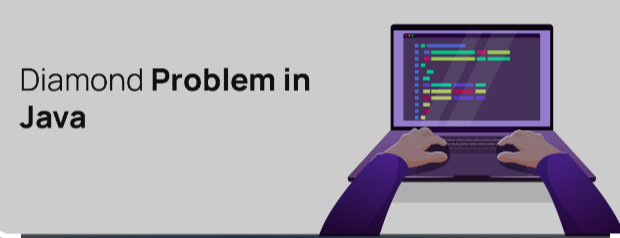
In Java, the Diamond Problem is a common issue that arises with multiple inheritance. When a class inherits from multiple parent classes that have the same method or field, the compiler gets confused on which one to choose. This can lead to unexpected behavior and errors in the program.
What is the Diamond Problem?
The Diamond Problem arises when a class inherits from two or more parent classes that have the same method or field. This causes a conflict, as the compiler cannot determine which parent class method or field should be used by the subclass. The diagram below illustrates the Diamond Problem:
How to Solve the Diamond Problem
There are several ways to solve the Diamond Problem in Java:
- Using the "super" keyword to call the method or field from a specific parent class.
- Using interfaces instead of abstract classes for multiple inheritance.
- Using a workaround known as the "Virtual Extension Method" in Java 8 or later versions.
Using the "Super" Keyword
The "super" keyword can be used to explicitly call the method or field from a specific parent class. This is done by using the name of the parent class, followed by a dot and then the method or field name. For example, if we have two parent classes A and B, and a subclass C that inherits from both, we can call the method "foo" from class A as follows:
java code
public class A {
public void foo() {
System.out.println("Method foo() from class A");
}
}
public class B {
public void foo() {
System.out.println("Method foo() from class B");
}
}
public class C extends A, B {
public void bar() {
super.A.foo(); // Call the foo() method from class A
}
}
Using Interfaces
In Java, interfaces can be used to achieve multiple inheritance without the Diamond Problem. Interfaces are similar to abstract classes, but they only declare methods and constants, without providing an implementation. A class can implement multiple interfaces, and thus inherit the methods and constants from all of them. For example:
java code
public interface A {
public void foo();
}
public interface B {
public void foo();
}
public class C implements A, B {
public void foo() {
// Implementation of the foo() method
}
}

Using Virtual Extension Methods
Virtual Extension Methods were introduced in Java 8 to provide a solution to the Diamond Problem. A Virtual Extension Method is a default method in an interface that provides a default implementation for a method. When a class implements multiple interfaces with the same method, the Virtual Extension Method provides a default implementation for that method. For example:
javaCopy code
public interface A {
public default void foo() {
System.out.println("Method foo() from interface A");
}
}
public interface B {
public default void foo() {
System.out.println("Method foo() from interface B");
}
}
public class C implements A, B {
// No need to provide an implementation for foo(), as it is provided by the Virtual Extension Method in interfaces A and B
}
Conclusion
In conclusion, the Diamond Problem is a common issue that arises with multiple inheritance in Java. To solve this problem, we can use the "super" keyword to call the method or field from a specific parent class, use interfaces instead of abstract classes for multiple inheritance, or use Virtual Extension Methods in Java 8 or later versions. By understanding and implementing these solutions, we can avoid unexpected behavior and errors in our Java programs.
At PLOVER, we take pride in offering a diverse range of remote work options, and we understand that finding the right job can be a challenging task. That's why all the jobs listed on our platform are verified by us to ensure that they meet our strict criteria. We make sure that each job is remote, pays in USD, and meets our working conditions, so you can focus on finding the best fit for you.
final thought


by Harsh Verma
final thought

